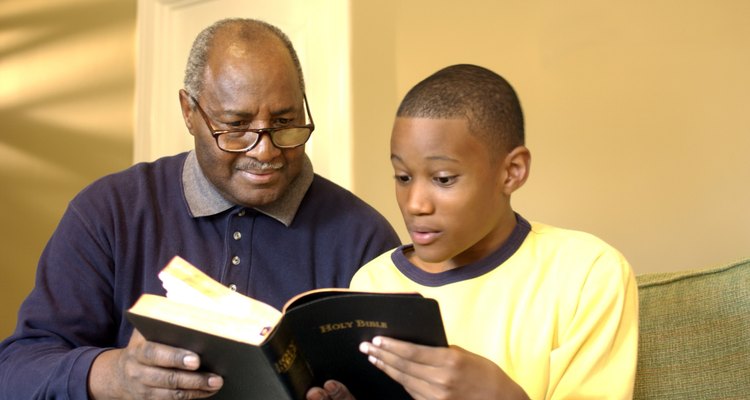
Thinkstock/Stockbyte/Getty Images
Before the main sermon begins in many churches, children get called up to the front of the church for a short, 3- to 4-minute sermon of their own, often called "children's time." During this kids' sermon, the children typically hear a short story that teaches a key message or Bible point. Children's time can also be an interactive learning opportunity. For a sermon about how Jesus cares for everyone, for example, ask the kids for their ideas about how they could show caring to someone in their family or at school.
Kids' Sermon
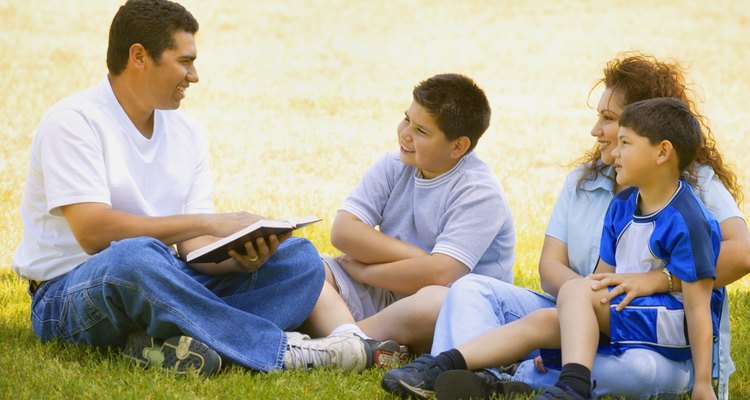
Design Pics/Design Pics/Getty Images
Children's time is often tied to the same scripture passage as the main sermon. The message is the same, but it's written in a greatly simplified, kid-friendly version. Pick a key verse or two from the scripture passage and ask an older child to read it aloud to the other kids. Tell the key story from the sermon to explain the significance of the verses. For example, if the main sermon is about Jesus' Sermon on the Mount, the kids' message would be that Jesus wants all of them to love each other and treat each other kindly.
Bible Story
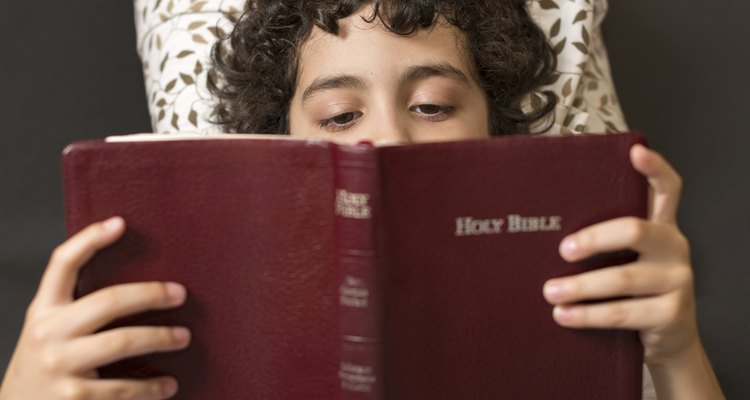
yelo34/iStock/Getty Images
Bible stories are an excellent source of inspiration for children's time, since these are often already familiar to the children and thus gives them a context for the message. Even the very youngest children typically are familiar with stories such as Jonah and the whale, Noah's ark and the Nativity story. Use the Jonah story as the basis for teaching obedience, the Noah's ark story to reassure kids that God keeps his promises, and the Nativity story at Christmastime to remind them of the gift that God sent the world long ago and the meaning of Christmas.
Interactive Message
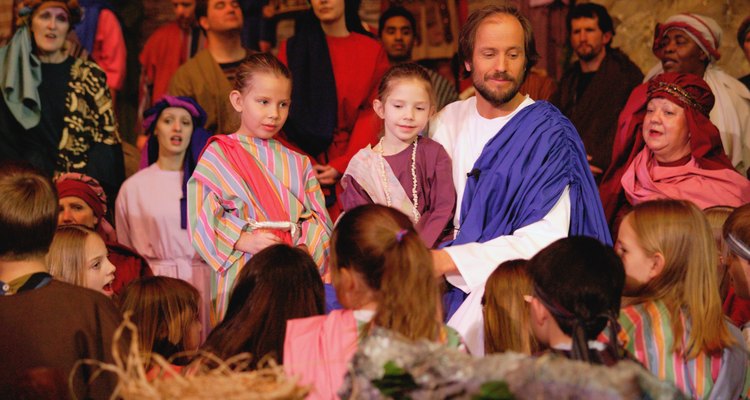
Design Pics/Design Pics/Getty Images
Interactive lessons get the kids involved in the message, which in turn helps it stay with them longer. Include a song as part of children's time; for example, if the sermon is about Jesus saying "let the little children come unto me," lead the children in singing, "Jesus Loves the Little Children." For an Easter message, give each of the kids a smooth river stone and ask them to roll it on the floor to provide a visual reminder of how the stone was rolled away from the tomb on the third day after Christ's crucifixion. Hand the children small paper palm fronds to wave as they respond, "Hosanna!" when you tell the story of Jesus' arrival into Jerusalem.
Congregation Involvement

Design Pics/Design Pics/Getty Images
Always use a microphone when giving the children's sermon, so the rest of the congregation can hear what you're telling the kids. This allows parents and grandparents to discuss the message further with the kids at home. The family also enjoys hearing the kids' responses to questions or listening to their little one help read the Bible verse out loud. Encourage parents of very young ones to come forward with their children at children's time. If the children are reciting a familiar verse or singing a song as part of children's time, have the kids turn to the congregation and ask them to sing along.
Related Articles

Characteristics of Fables for Kids

Activities for Bedridden Children

How to Set the Time on a Children's ...

Children's Activities for the Parable ...

Middle School Bible Games

Christian Harvest Crafts

LDS Games for Sunday School

Kids Worship Activities

Children's Activities on Moses, the ...

Preschool Activities for Teaching ...

How to Include Grandparents in a ...

How to Communicate Effectively With ...

Funny Letters to Write Your Children at ...
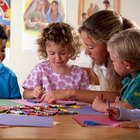
Craft Ideas on Obedience for ...

Kids' Snacks That Start With the Letter ...

Free Children's Bible Activities Grades ...

How to Say Thank You in a Loving Way to ...

Proud of You Letter Ideas

Things to Engrave in a Ring

How to Tell Him He Is a Good Father
References
Writer Bio
As a national security analyst for the U.S. government, Molly Thompson wrote extensively for classified USG publications. Thompson established and runs a strategic analysis company, is a professional genealogist and participates in numerous community organizations.Thompson holds degrees from Wellesley and Georgetown in psychology, political science and international relations.
Photo Credits
Thinkstock/Stockbyte/Getty Images